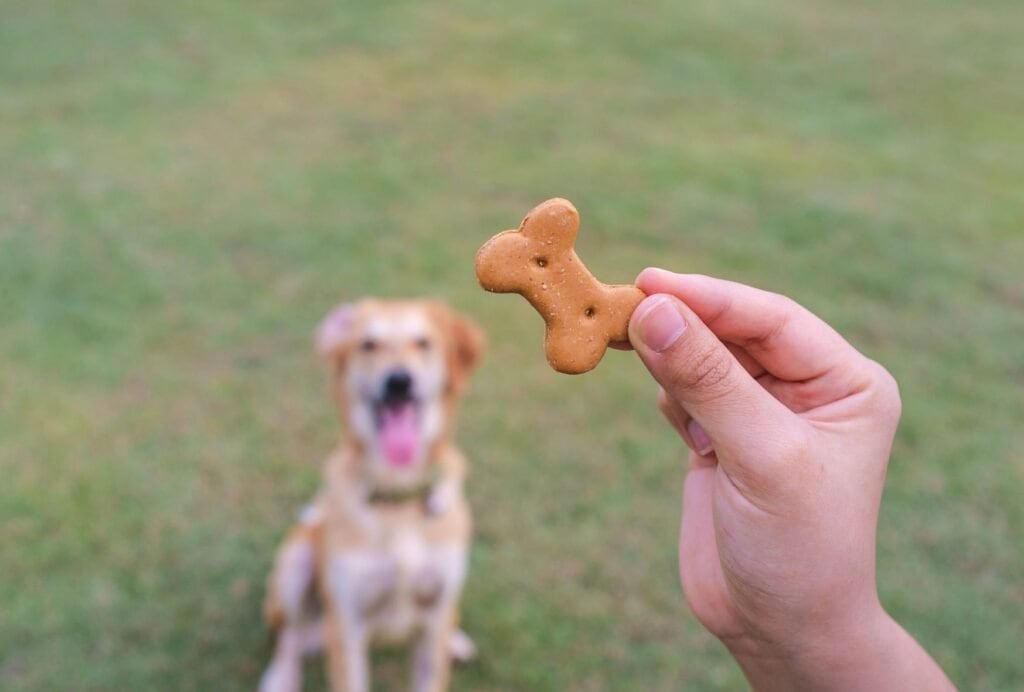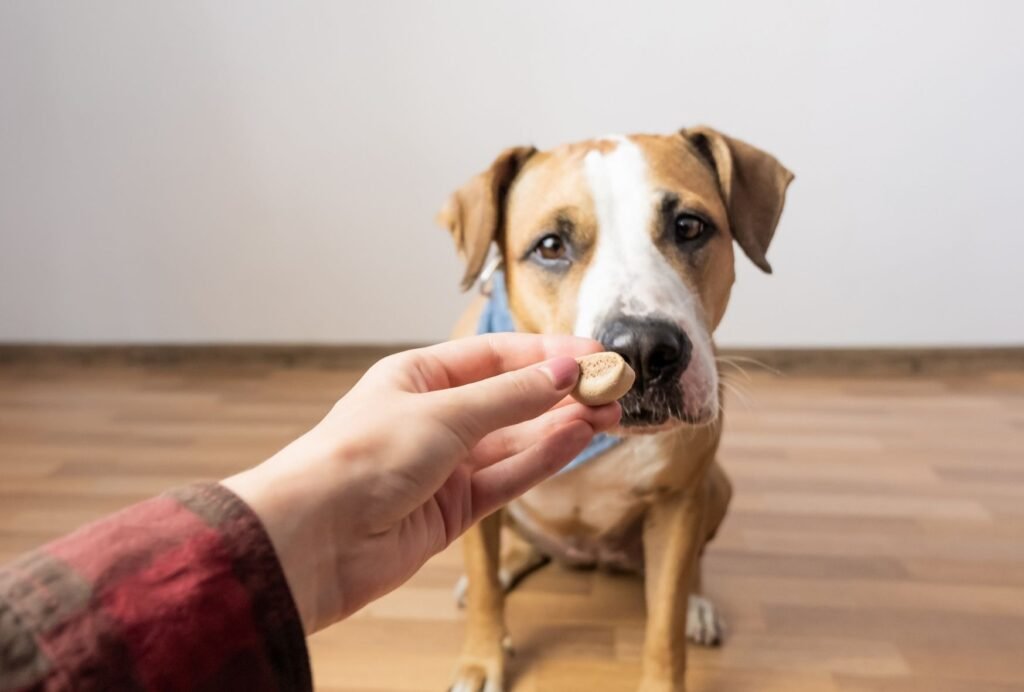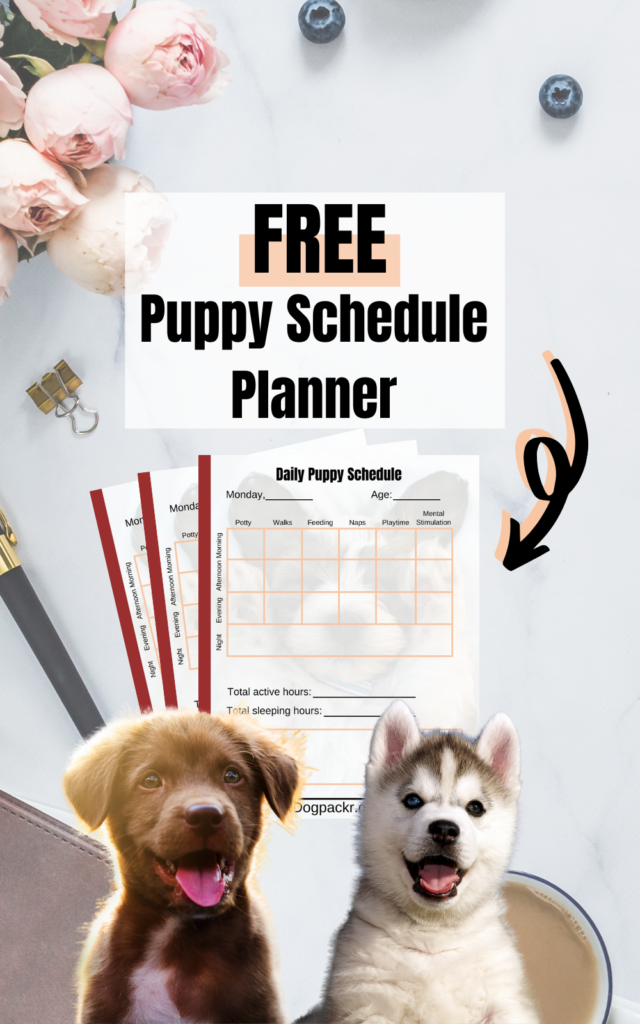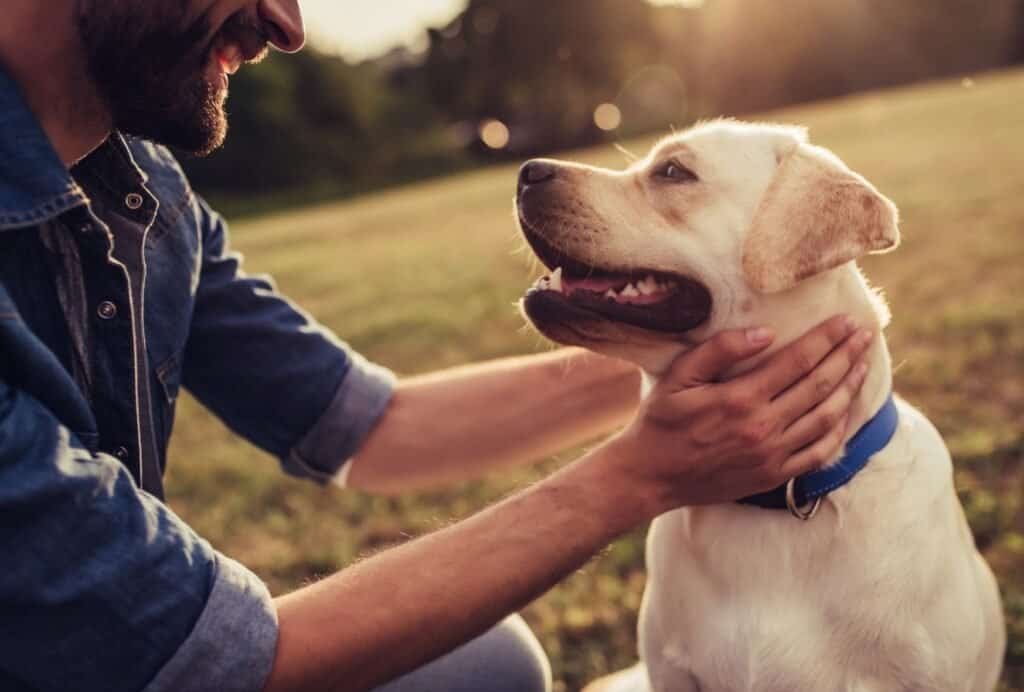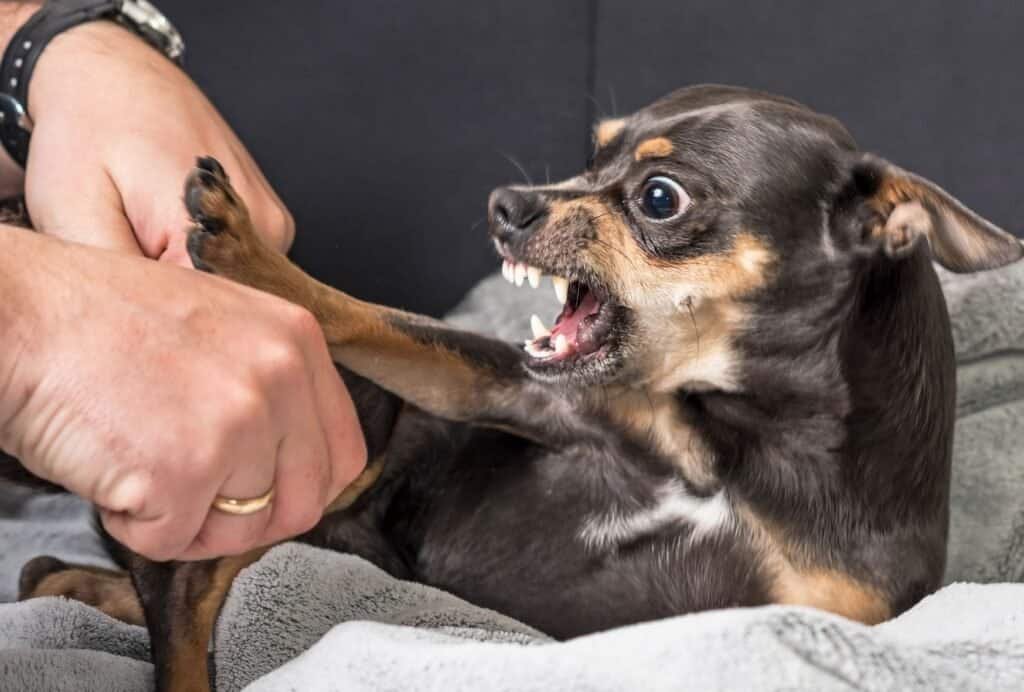Dog training can seem like a complicated thing if you don’t know where to start.
If you’re looking to train your dog, positive reinforcement dog training is the best way to do it.
But how exactly does it work? I’ve got everything you need to know about using positive reinforcement dog training here.
Table of Contents
What is positive reinforcement dog training?
Part of being a responsible dog owner means training your dog. It’s important to make sure that your dog knows what’s expected of him. It’s also very important to make sure that he responds to your commands.
To make sure your training successful, you’ll need to use the right training methods.
There are 7 common types of dog training. When you’re looking into training your dog, you’ll need to pick the right type.
One of the most popular and the best types of dog training is positive reinforcement.
But what exactly is positive reinforcement dog training?
Here’s a little more information on how it works.
Rewarding positive behavior
The most important part of positive reinforcement is encouraging good behavior. Whenever your dog behaves in a way you like, such as responding to a command, you should reward him. This encourages your dog to keep on performing that behavior. Conversely, you should simply ignore unwanted behavior.
So, for example, if you’re working on teaching him the “sit” command, and your dog sits when you ask him to, you can reward him.
You can also use positive reinforcement to encourage other types of behaviors too. If your dog struggles with behavioral issues, you can use this technique.
When your dog starts displaying behavior you want to see, reward him. This will encourage him to keep doing it in the future. With time and consistency, you’ll teach your dog what good behavior looks like.
These are a few common issues that using positive reinforcement can help with:
- How to Stop a Puppy from Biting When Excited
- How to Stop a Dog from Biting the Leash
- Do Puppies Grow Out of Whining?
Ignoring negative behavior
Rewarding positive behavior is half of how positive reinforcement training works. But there’s another side to this type of training.
You also need to ignore any bad behavior that your dog might be exhibiting.
When it comes to training, many people try to fight unwanted behavior with punishments.
Some people use spray bottles to spray their dogs. Others use even more drastic measures like violence.
You should never use adverse methods like these. They can seriously harm your dog physically, and will affect him mentally.
You may also find that your bond with your dog is affected.
Instead, ignore the behavior. Quite often, dogs do things they know they’re not supposed to because they’re looking for your attention.
If you don’t provide your dog with that attention, then your dog will realize that he can’t get what he wants by acting out.
Rewarding with treats or toys
Rewarding your dog when he’s exhibiting the behavior you want him to will help to encourage your dog to perform this behavior.
So what exactly can you use to reward your dog?
Most dogs love food. Dogs are food-motivated animals, which means that you can easily use food to encourage good behavior.
It’s a smart idea to have treats that have different values. So, treats that your dog likes a little more, and treats that your dog likes a little less.
You can also use your dog’s toys to encourage good behavior. If he has a favorite toy, reward him for good behavior by letting him play with it for a few minutes.
If you don’t have one of these things to offer at that moment, sometimes providing your dog with attention and praise can be enough too.
Clicker as an extra reinforcement
You may have heard of clicker training before. A clicker is a little device that makes a clicking noise when you press a button.
To get started with clicker training, you will need to condition your dog with it. Basically, you want your dog to associate the clicking sound with positive feelings.
You can start by clicking the clicker and immediately giving your dog a treat. This will associate the two in your dog’s mind. After that, try waiting a little before you give him the treat.
Using a clicker can help you be more precise in your training methods. Positive reinforcement is all about timing, but getting out a treat for your dog can take time.
With a clicker, you can click it the second your dog shows good behavior. Your dog will immediately know that you like whatever he’s been doing, and that a treat is on its way.
So, if you want your dog’s training to be as effective as possible, you might want to invest in a clicker.
Benefits of positive reinforcement dog training
Using positive reinforcement dog training is a highly effective way of training your dog. There are several types of dog training out there, but this is one of the most effective.
This is especially true when you combine it with a clicker.
Here are a few benefits that you can expect when you use positive reinforcement dog training.
Helps build a strong bond with your dog
When you adopt a dog, you’re adding a new family member into your life. That means that it’s important to build up a healthy bond with your dog.
Positive reinforcement is one of the best ways to do this.
Training methods that use punishments or adverse tools like shock or choke collars aren’t going to increase your bond with your dog.
In fact, they can seriously hurt your bond—even yelling at your dog can do that. Your dog will stop being able to trust you, and may even become aggressive.
These are a few related articles on aggression:
- 7 Tips for Overtired Puppy Aggression
- My Dog Gets Aggressive When Tired—What Can I Do?
- 6 Signs of an Aggressive Puppy and How to Stop It
When you use positive reinforcement dog training and focus instead on rewarding your dog for good behavior, you’ll be reinforcing your bond.
Your dog will trust you more and want to spend more time with you.
For even more help on improving your relationship, here are 11 ways to bond with your dog.
Scientifically proven to work
Another benefit of using positive reinforcement dog training is that it backed by science.
There have been many studies regarding positive reinforcement and its effectiveness versus other types of training.
Many owners who use positive reinforcement also report that their dogs are more obedient than other dogs.
It all comes down to using encouragement rather than fear. You’re showing your dog that the things you want him to do are fun and get rewarded. This is much more effective than trying to scare your dog or harm him when he shows bad behavior.
Reduces stress and anxiety
A dog that is stressed or anxious is not going to be a happy dog. When you use adverse training methods, your dog is likely to be much more anxious—especially around you.
And as his dog parent, that definitely isn’t something you want!
If you are dealing with a dog that’s stressed, take a look at these related articles:
When dogs get too stressed or anxious, they can become reactive or even aggressive. So it’s important to prevent your dog from feeling this way.
Positive reinforcement dog training will help to reduce these feelings. Your dog will be relaxed and calm. This means he’ll be more willing and able to listen to your commands.
He’ll also be much better behaved overall!
Makes training fun
Lots of people see training their dogs as work. But training doesn’t have to be a chore! Training can also be lots of fun.
In fact, for training to be as effective as it can be, training your dog should be fun!
Positive reinforcement will help get your dog engaged in the training process. He’ll be looking forward to his next reward. This will help to make training way more fun.
And if training if fun for your dog, then it’s bound to be fun for you too!
If you’re ready to get started with training and having fun with your dog, try using positive reinforcement to teach your dog these 11 easy dog tricks for beginners.
Doubles as mental stimulation
To keep your dog well-behaved, you’ll need to give him the right amounts of mental and physical stimulation every day.
These 11 tips to tire out a dog quickly can help you give your dog enough physical stimulation if you’re short on time.
But you don’t want to just give your dog physical exercise. You should exercise his brain too!
Using positive reinforcement can do a lot to encourage your dog to use his head. This will give him the mental stimulation he needs to stay well-behaved throughout the day!
If you would like to find other ways to mentally stimulate your dog, take a look at these 10 brain games for dogs to play at home.
Mental stimulation can also be a wonderful training tool if used correctly. Check out Braintrainingfordogs to learn how to train your dog to be the best dog he can be by using mental stimulation! Or have a look at Dogpackr’s review first to see if it’s a fit for you and your dog!

Positive reinforcement dog training FAQ
We’ve covered all the basics of positive reinforcement dog training. But you might still have some questions about it.
Here are the answers you’ve been looking for.
What is negative reinforcement in dog training?
Positive reinforcement dog training refers to giving your dog something positive to encourage a behavior. So what exactly is negative reinforcement?
Negative reinforcement means taking something away to encourage a dog’s continued behavior. This is usually a negative stimulus that your dog doesn’t like.
A good example is if you’re trying to teach loose-leash walking. When your dog pulls at the leash, you hold it taut.
But when your dog walks comfortable beside you, you give the leash a lot of slack.
The removal of the unpleasant feeling of the leash being tight is negative reinforcement for your dog to walk politely beside you.
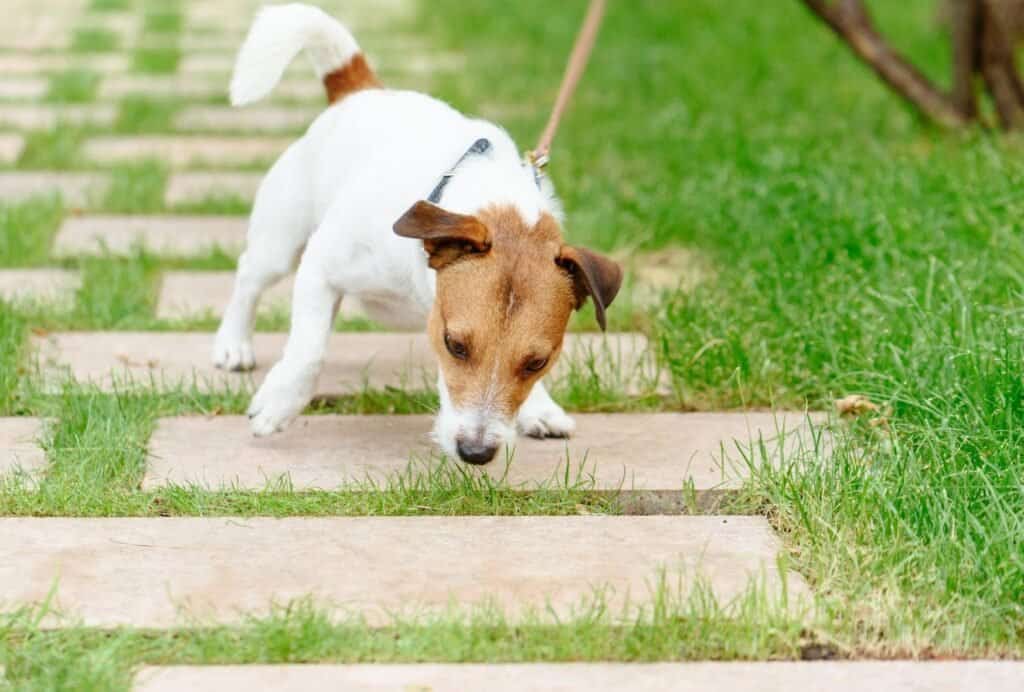
Why is positive reinforcement dog training not working for me?
Positive reinforcement is probably the most effective way of training a dog. But if it’s not working for you, that could be pretty frustrating.
Most of the time, positive reinforcement training doesn’t work because owners aren’t aware of how important timing is.
You need to be ready to give your dog positive reinforcement the second that he shows a behavior you like.
This is the main reason why investing in a clicker for training might be helpful. Your clicker will allow you to be much more precise with your rewards.
Also remember that all types of training take time. You will need to be patient, so don’t expect results right away!
Positive reinforcement dog training aggression
If you have a reactive or aggressive dog, this can be stressful and frightening. You might be worried about your dog hurting yourself or someone you know.
So what can you do if you have an aggressive dog? Positive reinforcement dog training can work here, too. However, you will need to take things very slowly and carefully when working with an aggressive dog.
Every time you and your dog are in a situation where he gets aggressive, ease him into it and help him get desensitized. Reward him when he is calm and keeps his control.
Aggressive dogs can be challenging—even dangerous—to deal with. Depending on the severity of your dog’s aggression, you may want, or need, to work with a professional dog trainer.
Positive reinforcement dog training books
If you want more information on positive reinforcement dog training, you might want to consider picking up a book or two.
There are a lot of great books out there on using positive reinforcement to train a dog.
One great author who has been using this training technique for decades in Karen Pryor. She has published several books on positive reinforcement and clicker training.
Make sure to check them out if you’re looking for something to read.
Conclusion
Training your dog is one of the most important parts of having a dog. Your dog needs to be well-behaved, but you can’t expect him to instinctively know what he needs to do.
Using positive reinforcement dog training will give you all the tools you need to train your dog. With time, practice, and patience, you can help your dog become a polite canine citizen.
*Disclosure: This post may contain affiliate links, meaning, I get a commission if you decide to make a purchase through one of my links, at no cost to you.


